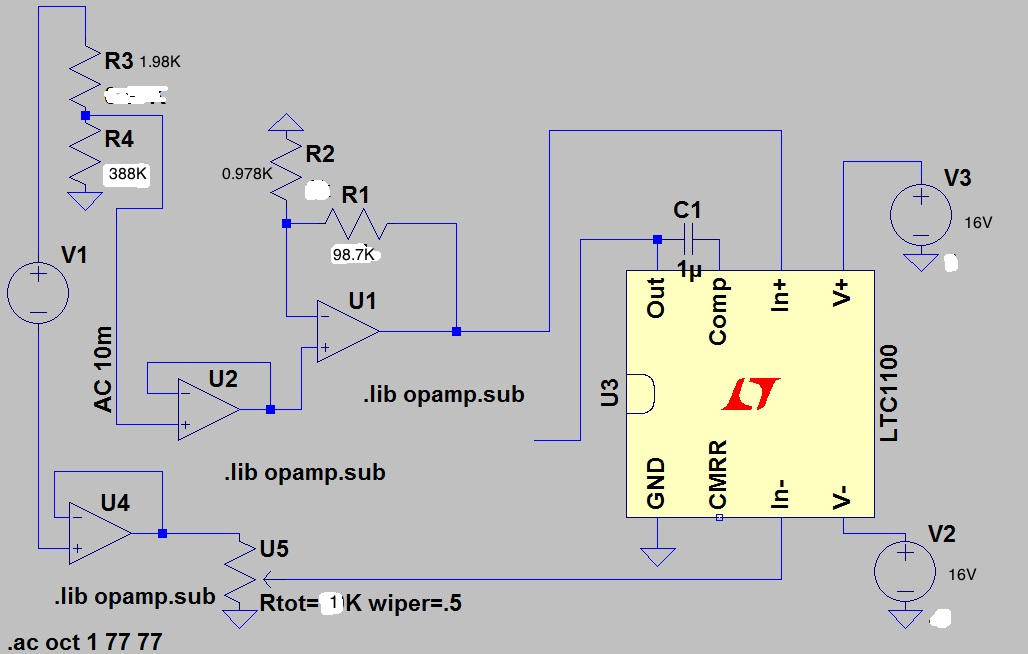Hi,
I am trying to amplify the differential signal with the ina116. I am also trying to find the input impedance of LM741CN op-amp at the same time. Here is what I did so far;
My signal source is connected to a voltage divider that has an output of around 21mV p-p. Voltage divider's output is connected to an non-inverting amplifier with a gain of around 100 so the output of the NI amp is 2.08 p-p and this is connected to -ve input of ina116.
The same signal source also connected to a buffer amplifier and its output is connected to a potentiometer which has an output of 2.08V p-p. Potentiometer's output is then connected to +ve input of the ina116.
Thus, I have almost the same voltage values for both inputs of the ina116 and as a result i should be having a zero volt at the output right ? However, I have an output of 2.48mV p-p and the waveform looks like a mixture of a sine and sawtooth signal.
When I change the output voltage of the potentiometer nothing happens on the output of in-amp. I configured the in-amp as it was shown in the datasheet. Does anyone have an idea of why I am not having an amplified differential signal when I change the voltage of the potentiometer ?
Regards
Caglar Sekmen


